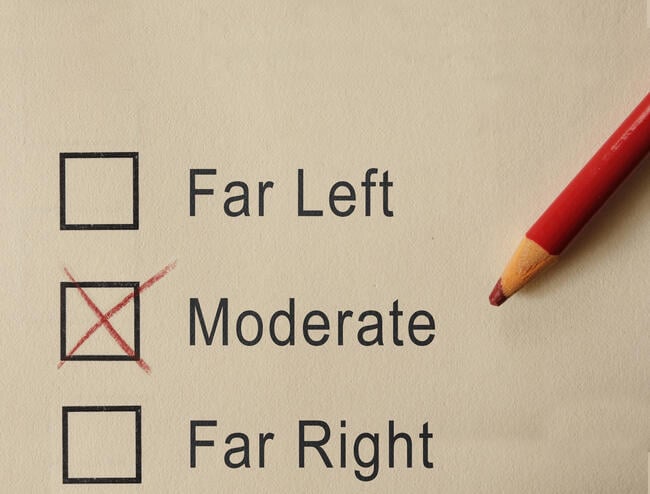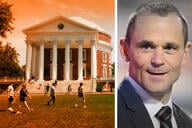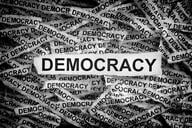You have /5 articles left.
Sign up for a free account or log in.

zimmytws/iStock/Getty Images Plus
In 2020, I was asked to sign a pledge that felt more like an empty confession of guilt than a productive call to action—an admission that my university, and I, were complicit in white supremacy. Signing the pledge, backed by our Faculty Senate, meant acknowledging “the University of Cincinnati is an institution founded on white supremacist values in a country founded on the same … that we have benefitted and continue to benefit from white supremacy through the opportunities, advancements, inclusion, sense of self-worth, and freedom it has allowed us … that in our complicity [with white supremacy] we have likely contributed to emotional suffering in Black people, including UC faculty, staff, and students.” The roster of university employees who signed the pledge would be posted publicly.
I was told that my discontent was just a symptom of my white privilege and spent ample time exploring whether this was true. I put in the work, a popular phrase at the time, by reading How to Be an Antiracist and White Fragility. Maybe I had missed something and Ibram X. Kendi and Robin DiAngelo would provide clarity.
The ideas I found were poorly constructed and dehumanizing. Ideology aside, signing a public loyalty pledge felt dystopian and counterproductive. I imagined myself as a first-year student of color who saw that my white faculty had signed a pledge admitting that the education system was designed for me to fail and that they had actively supported my failure. Why bother trying to succeed when university employees were willfully admitting to violating my civil rights?
Over the next couple of years, I chose to remain silent whenever these ideas resurfaced out of fear that speaking out could jeopardize my career. I was told that my silence was complicity, and indeed I had been complicit in letting these toxic ideas echo without so much as a whimper. As the 2020s stretched onward, though, I noticed the loudest and most extreme voices that sometimes dominated the conversation were largely ignored, and their demands were not met. Despite calls by a vocal few, there wasn’t much appetite on campus for the “antiracist discrimination” that Kendi called for or the white saviorism promoted by DiAngelo.
The university held firm in its moderate approach to diversity, equity and inclusion and mostly expanded resources for all students without restricting access by identity group. It is worth noting that most DEI initiatives and offices on campus offer noncontroversial services like tutoring, mental health counseling and accessibility services like sign language interpreters. But the public and politicians were forming their opinions of DEI based on the voices of those with the megaphones and lucrative book contracts.
Last year, I enrolled in a graduate program in urban educational leadership and dived into the very discussions I had avoided for so long. I read the foundational critical race theory literature, one of the predominant theories in the DEI realm. Although I found many ideas with which I disagreed, I also found a robust field that has much to offer in terms of the ways we think about educating our students, understanding the needs of diverse communities and working together to create better opportunities for everyone. Most importantly, when I actively pushed back on concepts that I found disagreeable, it resulted in great discussions with instructors and in developing more robust ideas. I discovered there is room for debate in the DEI space and my own silence had been self-imposed.
Many of my classmates are running the very DEI programs under threat by legislation and funding cuts. These programs provide educational resources to the underemployed and mentorship and financial resources to students who desperately need it, and they encourage student civic engagement—the very thing lauded by the Ohio Senate bill banning DEI offices and the use of DEI considerations in hiring, scholarships and trainings. (The bill, signed by the governor in March, goes into effect at the end of this month.)
Since 2020, I have been slowly forced to confront my own fundamental assumptions that might have once led me to support legislation like Ohio’s Senate Bill 1. Blockbuster voices like Kendi’s and DiAngelo’s are not reflective of the everyday practices within my institution, and the few moments that deterred me from speaking were just moments, likely caused by the same flavor of polarization that impacts the entire country. Polarization is not just a higher ed problem, but a national problem that has been simmering for more than a decade.
Current legislation targeting DEI upholds the most radical media-amplified voices as representative of the whole, even though these voices have been largely unsuccessful on many public campuses. Our university is not Columbia or Harvard, yet it seems as if legislators are attempting to punish our institution for the sins of its private counterparts. But when there are no loud moderate voices, how can we expect the public to see anything other than the extremes?
I find myself at a crossroads again. I could stay silent, as I did in 2020, but the silence of moderate voices has gotten us here, and silence will only result in negative outcomes for our students, faculty and staff. The time for silence is over—was over—long ago. The caricature of higher ed that you see in political rhetoric is not reflective of my university. We must be more vocal in challenging the narrative that our institutions are ideologically captured.
We still have much work to do in higher ed, and it’s not good enough to simply resist legislation without acknowledging the need for a renewed call for moderation. This moderation only comes when those with diverse viewpoints work together to ensure the success of all our students. This means reaffirming our commitment to understanding and addressing the unique needs of our student populations.
We must also come to terms with emerging research that shows some practices designed to challenge oppression on campus may promote its proliferation and thoroughly analyze the impact of our actions on student success. To quote U.S. Supreme Court Justice Louis Brandeis, “If there be time to expose through discussion the falsehood and fallacies, to avert the evil by the processes of education, the remedy to be applied is more speech, not enforced silence.”
We need brave, diverse voices and productive disagreement, not legislation, to bolster higher education’s mission to pursue the truth for the sake of human flourishing.




